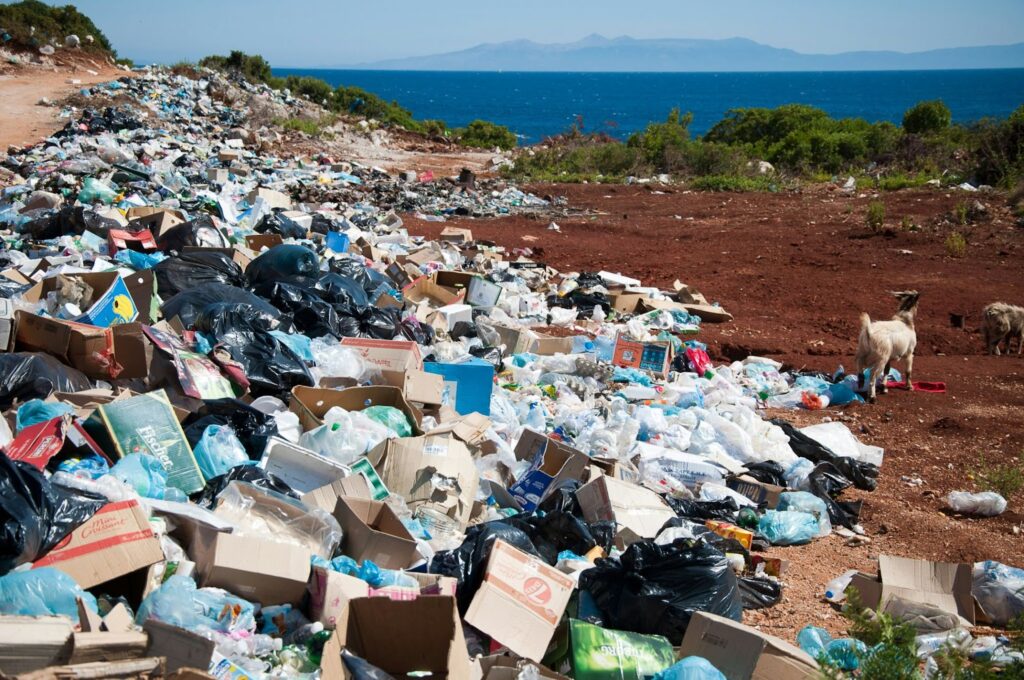
The looming threat of climate change, along with the mounting evidence of environmental degradation, has intensified the global search for sustainable solutions. Green chemistry promises to revolutionize how we approach industrial processes by minimizing environmental harm.
Green chemistry is the design of chemical processes and products that reduce or eliminate the use and generation of hazardous substances, promoting sustainability and minimizing environmental impact. It focuses on creating safer, more efficient methods that conserve resources and prevent pollution. Some common everyday examples are using biodegradable plastic, environmentally friendly dry cleaning and using water-solvent paints.
With its focus on reducing waste, using safer materials and conserving resources, green chemistry seems like a beacon of hope. Regardless, can it truly reverse the damage we have done? Are we still too entrenched in traditional methods to make a significant impact?
According to the U.S. Environmental Protection Agency (EPA), “green chemistry applies across the life cycle of a chemical product, including its design, manufacture, use and ultimate disposal.”
One of the fundamental principles of green chemistry is that it “prevents pollution at the molecular level” by minimizing the hazards of chemical feedstocks, reagents, solvents and products.
An instance of preventing pollution at the molecular level is water-based paints. Traditional paints use harmful chemical solvents that release toxic fumes and can cause health issues and contribute to air pollution.
Green chemistry promotes the use of water as a safer solvent, which eliminate these harmful fumes and reduces pollution, while still providing the same quality and finish that people expect from paint.
At its core, green chemistry centralizes itself upon the 12 principles, which provide a clear and actionable blueprint for reducing the environmental impact of chemical processes. These principles emphasize waste prevention, atom economy and the design of safer chemicals.
By applying these guidelines, green chemists aim to create processes that are safer, more efficient and less harmful to the environment.
The 12 principles presented by the American Chemical Society (ACS) are as follows:
Prevention: Avoid waste creation instead of managing or cleaning it up afterward.
Atom economy: Maximize the incorporation of materials into the final product to reduce waste.
Less hazardous chemical syntheses: Avoid using or creating harmful substances in chemical processes.
Designing safer chemicals: Design chemicals to perform their function with minimal toxicity.
Safer chemicals and helpers: Minimize or avoid the use of harmful auxiliary substances.
Design for energy efficiency: Reduce energy use by conducting reactions at room temperature and pressure when possible.
Use of renewable feedstocks: Prefer renewable raw materials over non-renewable ones.
Reduce derivatives: Avoid unnecessary derivatives to prevent excess waste and liquid use.
Catalysis: Use catalysts that can be reused for many reactions, instead of chemicals that are used only once.
Design for degradation: Ensure chemicals break down into harmless substances after use to avoid environmental harm.
Real-time analysis for pollution prevention: Develop real-time monitoring to control processes and prevent hazardous substances from forming.
Inherently safer chemistry for accident prevention: Design processes to minimize risks like explosions, fires and accidental releases.
Designing chemical syntheses to prevent waste, for example, involves creating chemical processes that generate little to no hazardous byproducts, thus eliminating the need for expensive treatment or disposal. This helps not only in reducing environmental pollution but also in lowering the costs and energy associated with managing waste.
Participating in green chemistry offers a wide range of benefits, not only improving human health and environmental quality but also enhancing the economy and business operations. The EPA supports green chemistry and its long-reaching benefits across various industries.
Green chemistry contributes to cleaner air and water by reducing the release of hazardous chemicals.
According to the EPA, green chemistry leads to “less damage to lungs” and provides “cleaner drinking and recreational water.” This means that green chemistry practices reduce the release of toxic chemicals and hazardous byproducts which lead to cleaner air by minimizing pollutants that cause respiratory issues and smog. It also protects water sources by using safer chemicals and processes that prevent contamination of drinking and recreational water.
Workers in the chemical industry face increased safety due to “less use of toxic materials” and fewer accidents like fires or explosions.
Green chemistry minimizes harmful chemical releases into the environment, reducing the risk of ecosystem disruption and decreasing global warming potential, ozone depletion and smog formation.
Chemicals designed with green principles either “degrade to harmless products” or are recovered for further use, meaning less harm to plants and animals and less reliance on hazardous waste landfills.
By using fewer synthetic steps, green chemistry allows for faster manufacturing, reduces waste and eliminates the need for costly waste disposal and remediation. Businesses benefit from “higher yields for chemical reactions,” allowing smaller quantities of feedstock to be used while increasing plant efficiency and saving energy.
The World Economic Forum (WEF) furthers this assertion, stating how “green chemistry solutions have repurposed CO2 as an industrial refrigerant, reducing climate impacts by 15 percent.”
Green chemistry is key to achieving a circular economy by addressing resource use at the molecular level. By reducing waste, minimizing toxic materials and creating safer, more efficient processes, it not only mitigates environmental damage but also offers economic and health benefits. While it may not completely reverse the damage already done, its innovations are essential steps towards a sustainable economy—driving us closer to a greener future.
Copy edited by Camiryn Stepteau
































